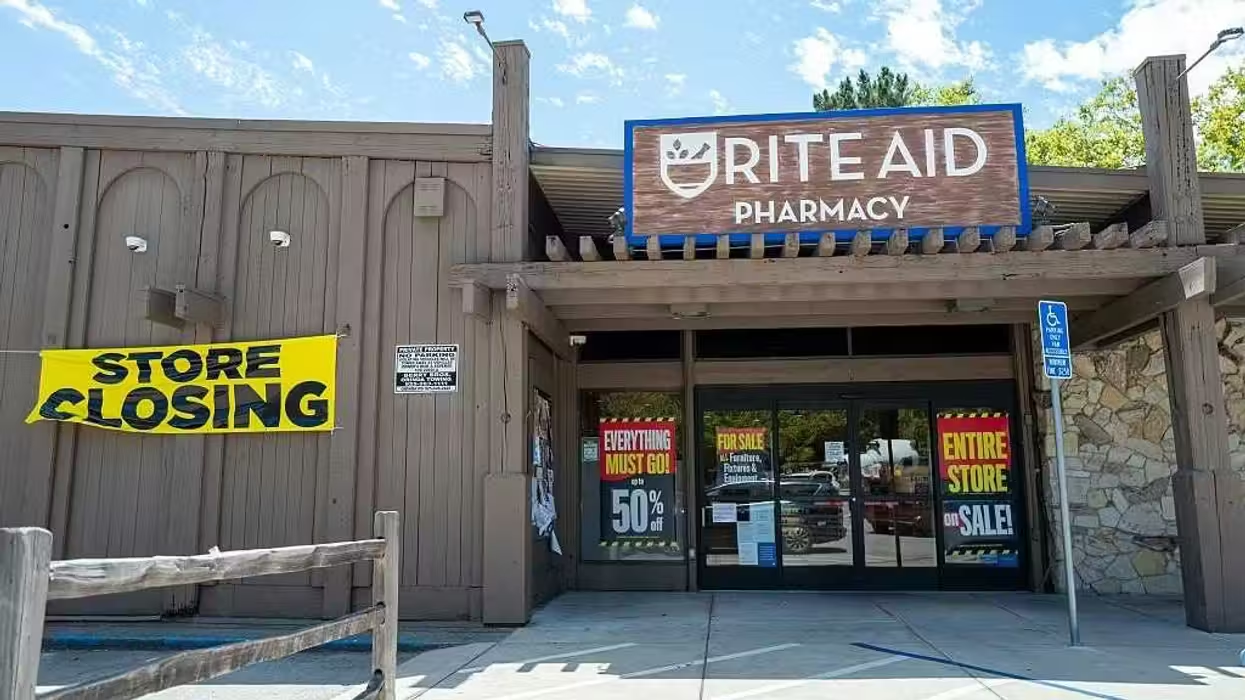You know that biofuel-laced gasoline you've been putting in your car?
The auto industry says it can hurt the engines of some cars.
The restaurant industry says it's increasing food prices.
Others say it doesn't even result in fewer greenhouse gas emissions.
So what is going on with the Renewable Fuel Standard (RFS)?
 Although renewable fuels don't have to use corn-based ethanol, it is certainly the most popular kind. The problem, some industries say, is that mandates for renewable fuels is driving up the cost of feed corn, having a trickle down effect. (Photo: Shutterstock.com)
Although renewable fuels don't have to use corn-based ethanol, it is certainly the most popular kind. The problem, some industries say, is that mandates for renewable fuels is driving up the cost of feed corn, having a trickle down effect. (Photo: Shutterstock.com)
Last month, the EPA finalized the 2013 RFS, which requires "16.55 billion gallons of renewable fuels to be blended into the U.S. fuel supply" -- that's a 9.74-percent blend.
RFS first was passed under the Bush administration in 2005, enacted in 2007. It was later strengthened in 2009 under the Obama administration with a 10.21-percent blend approved, although up to a 15-percent blend was later approved as well.
Still, being enacted for several now has given various industries time to feel the impact. The corn industry -- the primary provider of biofuel in the form of ethanol, although other substances can produce the alternative as well -- is booming. Other industries though say they're feeling pains that they now believe can attribute to RFS.
Renewable fuel producers agree that some industries might be feeling some growing pains but it's not because of RFS, they say.
Is RFS making your food more expensive?
It was about two or three years ago that Scott Vinson, vice president of the National Council of Chain Restaurants, started to hear members of the trade group complain about the increase in food costs.
"We surveyed the landscape of all possible issues," Vinson said, as the association tried to figure out what might be going on. They looked at weather, gas prices, the exchange rate and federal policies.
"We quickly eliminated the ones that no one has any control over," like the weather, Vinson said, "and focused on ones that the federal government has control over."
It was at this point that the association narrowed down an increase in food costs to the now expired Volumetric Ethanol Excise Tax Credit and RFS.
At this point, Vinson said they hired Price Waterhouse and Coopers to independently research the impact RFS might really have on the chain restaurant industry specifically.
The trade association published this report's findings in November 2012, showing that PWC found RFS was raising food prices in the chain restaurant industry alone by up to $3.2 billion.
"That's a really shocking number," Vinson said.
For an individual chain restaurant, this could translate to more than $18,000 per year. But customers are unlikely to notice because most restaurants are just absorbing the expense themselves.
"Our industry is so price sensitive," Vinson said. "We can't just raise menu prices, pass it onto the customer. It doesn't work that way for restaurants."
Here's a breakdown of how much the organization said RFS has increased the cost of certain foods popular at chain restaurants:
 (Image: Free Food Fairness)
(Image: Free Food Fairness)
Vinson acknowledged that a variety of factors influence food prices, but when it came to focusing on the policy-related influences, he was surprised at the influence PWC found the renewable fuel mandate had.
 An excerpt from PWC's executive summary. (Image via National Council of Chain Restaurants)
An excerpt from PWC's executive summary. (Image via National Council of Chain Restaurants)
A report from Congressional Research Service "Renewable Fuel Standards: Overview and Issues" published in March noted increased food prices as a potential impact from RFS:
The increased demand for U.S. agricultural products is expected to raise the overall commodity price structure, leading to an annual increase in the cost of food per capita of about $10 by 2022, or over $3 billion.
Now, it is part of the National Council of Chain Restaurants' mission to encourage lawmakers to repeal RFS. From their perspective, increased costs on the chain restaurant industry is resulting in fewer workers being hired and fewer franchises being opened.
“Congress knows a well-intended idea [the RFS] has turned out to be a very serious problem, and it’s getting worse... What sounded like a good idea has had serious consequences and artificially driven up the price for food both at home and in our restaurants and it is hurting my employees, fellow franchisees, customers, the food service industry, and my family every day," Ed Anderson, a Wendy’s franchisee and “Feed Food Fairness” coalition member, said in a testimony earlier this year to the House Energy and Commerce Committee.
“This mandate is making food so expensive that it’s harder to continue investing in new or remodeled restaurants which would create badly needed construction and restaurant jobs," Anderson continued, saying he has seen food costs go up $30,000 each year for his restaurant.
Other arguments against RFS
But chain restaurant industry is not the only one calling for a repeal of RFS. TheBlaze has reported the oil industry, albeit an expected opponent of renewable fuels, saying a 15 percent ethanol blend can gunk up the engines of older vehicles -- although it acknowledged the more common E10 to be safe.
 This photo taken June 20, 2013 shows a sign advertising pricing for different types of gasoline is pictured at a gas station in Oklahoma City. A high blend of ethanol gasoline, E15, which contains 5 percent more ethanol than the 10 percent norm sold at most U.S. gas stations, is sold in just about two dozen stations in six Midwestern states. But sales could spread as the Obama administration considers whether to require more ethanol in gasoline. (Photo: AP/Sue Ogrocki)
This photo taken June 20, 2013 shows a sign advertising pricing for different types of gasoline is pictured at a gas station in Oklahoma City. A high blend of ethanol gasoline, E15, which contains 5 percent more ethanol than the 10 percent norm sold at most U.S. gas stations, is sold in just about two dozen stations in six Midwestern states. But sales could spread as the Obama administration considers whether to require more ethanol in gasoline. (Photo: AP/Sue Ogrocki)
An opinion piece in the Wall Street Journal last month pointed out what it believed were flaws in the EPA's mandates for both cellulosic and ethanol-based biofuel. Here's a bit on what it said about ethanol specifically (emphasis added):
The EPA also updated its corn ethanol mandates. This year the overall biofuel quota stands at 16.55 billion gallons, up from 15.2 billion in 2012. As we explained in "The Ethanol Tax" on July 20, because gasoline consumption over the past six years has been much lower that the government predicted, refiners are now nearing a "blend wall" of a maximum 10% ethanol (E10) per gallon.
A survey by AAA found that only 5% of vehicles are approved for higher levels of ethanol under manufacturer warranty, so many motorists won't buy gas with higher ethanol content. In order to comply with the federal law, the oil and gas industry has to buy credits that spiked at more than $1 a gallon for the ethanol it can't use. This raises the cost of gasoline at the pump by an estimated five to 10 cents a gallon.
The EPA acknowledged that its ethanol mandate exceeds the level that can be reasonably blended, but it told refiners: tough luck, buy credits on the market. This is a back-door tax on gasoline and Congress should call the Administration on it.
A defense of RFS
What does the renewable fuel advocates and industry have to say about these allegations?
"There are folks that are saying ethanol has grown too far, too fast, largely oil companies or food companies," Renewable Fuel Association President and CEO Bob Dinneen told TheBlaze.
Dinneen said RFS, largely corn ethanol, reduces a dependence on foreign oil and increases the country's energy security. He also noted a report from the World Bank that found the most important factor driving food prices is oil.
"The key conclusion from the studies based on time series analysis— especially the ones that include the recent boom period—is that the strength of the energy/food price relationship should not be used as a metric associated with the impact of biofuels on food prices," the report stated about mandated renewable biofuels.
Jeff Lautt, CEO of POET, one of the top five ethanol producers in the country, says the food industry blaming RFS for driving up the price of feed corn is misunderstanding a major point. Although many might not know it, Lautt pointed out the byproducts of corn producing ethanol preserves the fats and starches of the product, which is still used for cattle feed.
"We have become the largest feed corn producer," Lautt told TheBlaze.
"Yes, industry created increased demand for corn, but the number one driver of food cost is oil," Lautt echoed.
As for E15 being harmful to older car's engines, Dinneen said only about 25 gas stations in the whole country carry that blend percentage. He also said a reason why the EPA did not approve it for older cars was because the agency couldn't easily find unused cars with older engines on which to adequately test it out on the life of the vehicle.
 This July 11, 2012, handout photo provided by the Renewable Fuels Association shows a Lawrence, Kansas, fueling station pump with various grades of fuel, including E15, which contains 5 percent more ethanol than the current 10 percent norm sold at most U.S. gas stations. The Supreme Court to block sales of E15 at the petition of the American Petroleum Institute. (Photo: AP/Renewable Fuels Association, Robert White)
This July 11, 2012, handout photo provided by the Renewable Fuels Association shows a Lawrence, Kansas, fueling station pump with various grades of fuel, including E15, which contains 5 percent more ethanol than the current 10 percent norm sold at most U.S. gas stations. The Supreme Court to block sales of E15 at the petition of the American Petroleum Institute. (Photo: AP/Renewable Fuels Association, Robert White)
Vinson called RFS a "prime example of the federal government picking winners and losers."
Lautt told TheBlaze he would of course, in a perfect world, rather consumer demand drive acceptance of renewable fuels -- not a government mandate.
America is "always about choice and options," Lautt said. "The best way to reduce price is to have competition."
But Lautt said the lobbying fuel industry has stifled this choice.
"Once we can truly get the shackles off the market" -- those shackles being the oil industry -- is when Lautt said he believes renewable fuel could take on an even bigger role in the market.
Lautt said these counter arguments to RFS gained steam among some industry groups within the last 12 to 19 months. Looking at RFS and the recent fuel market, Lautt said renewables have reached a solid 10 percent of the market.
This, he thinks, "surprised" the oil industry, "because it's now a legit choice for fuel for people in America."
--
[related]

 Although renewable fuels don't have to use corn-based ethanol, it is certainly the most popular kind. The problem, some industries say, is that mandates for renewable fuels is driving up the cost of feed corn, having a trickle down effect. (Photo: Shutterstock.com)
Although renewable fuels don't have to use corn-based ethanol, it is certainly the most popular kind. The problem, some industries say, is that mandates for renewable fuels is driving up the cost of feed corn, having a trickle down effect. (Photo: Shutterstock.com)






